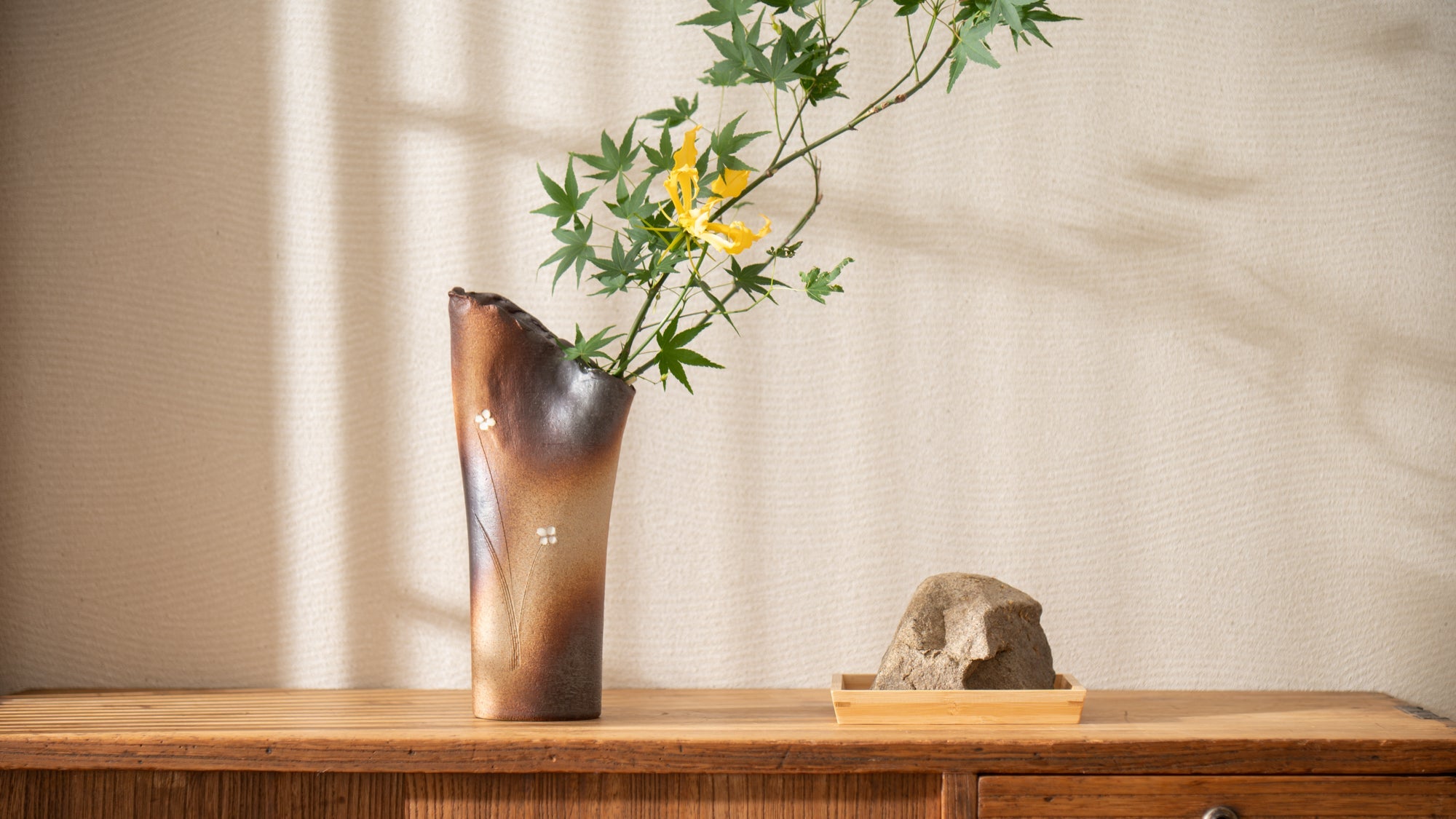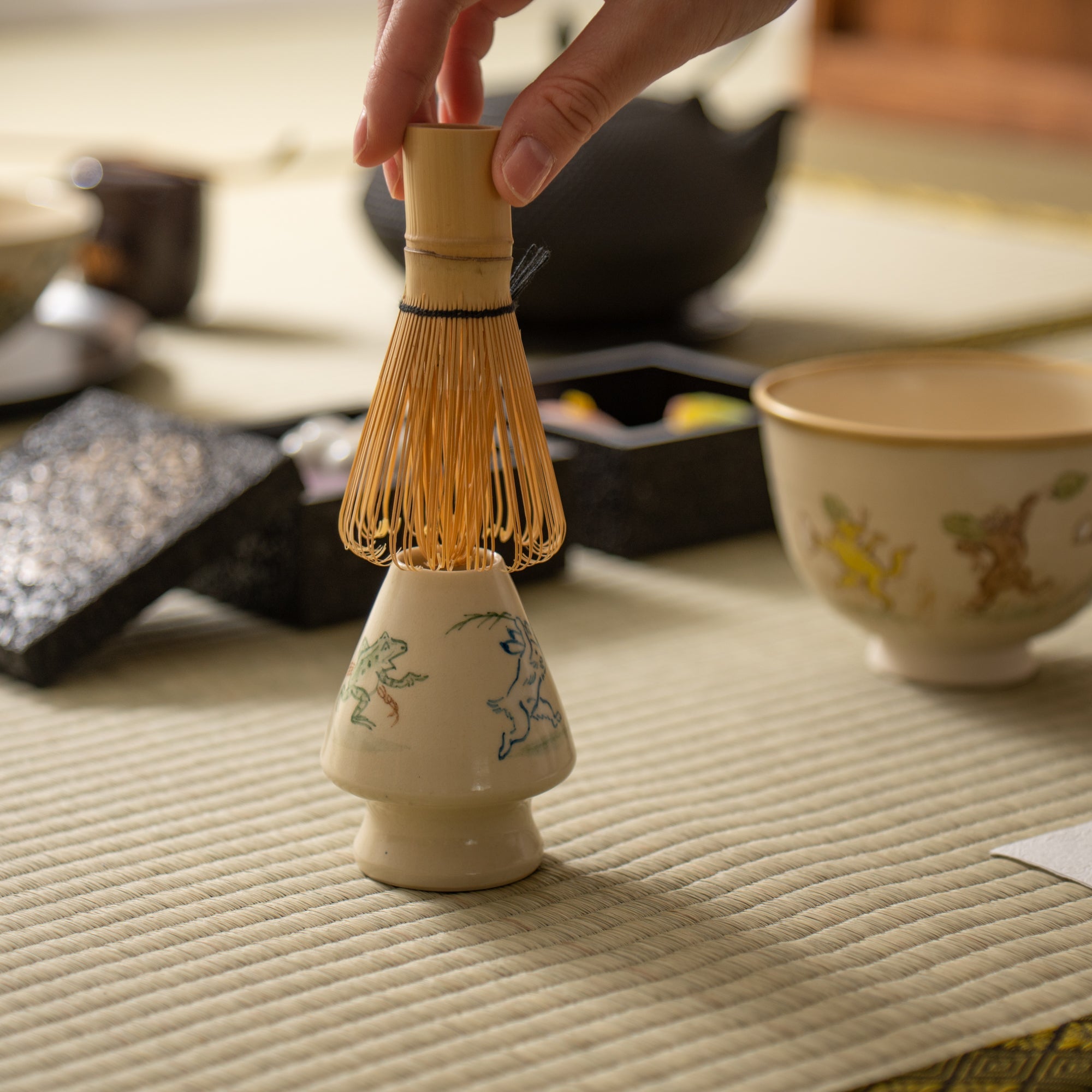
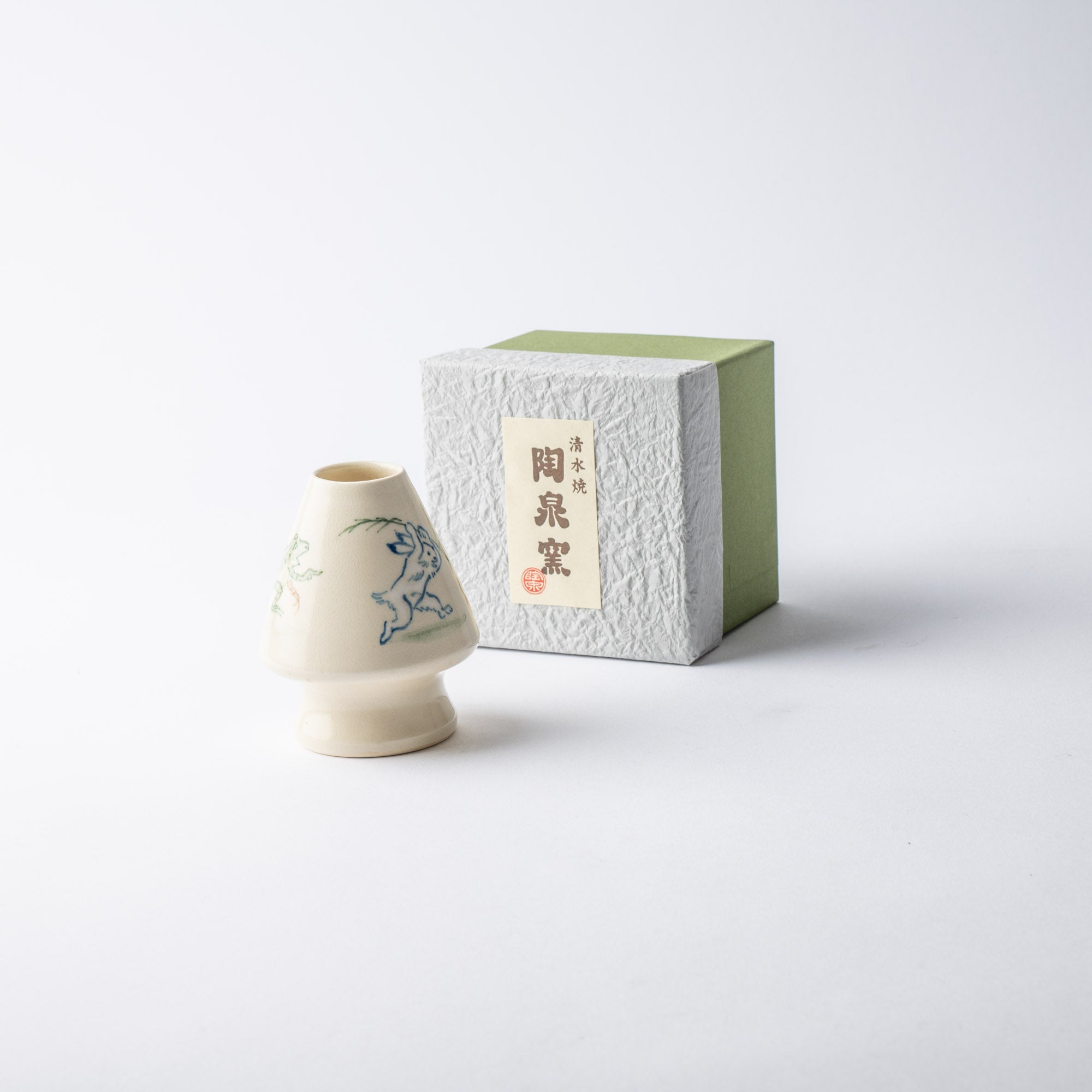
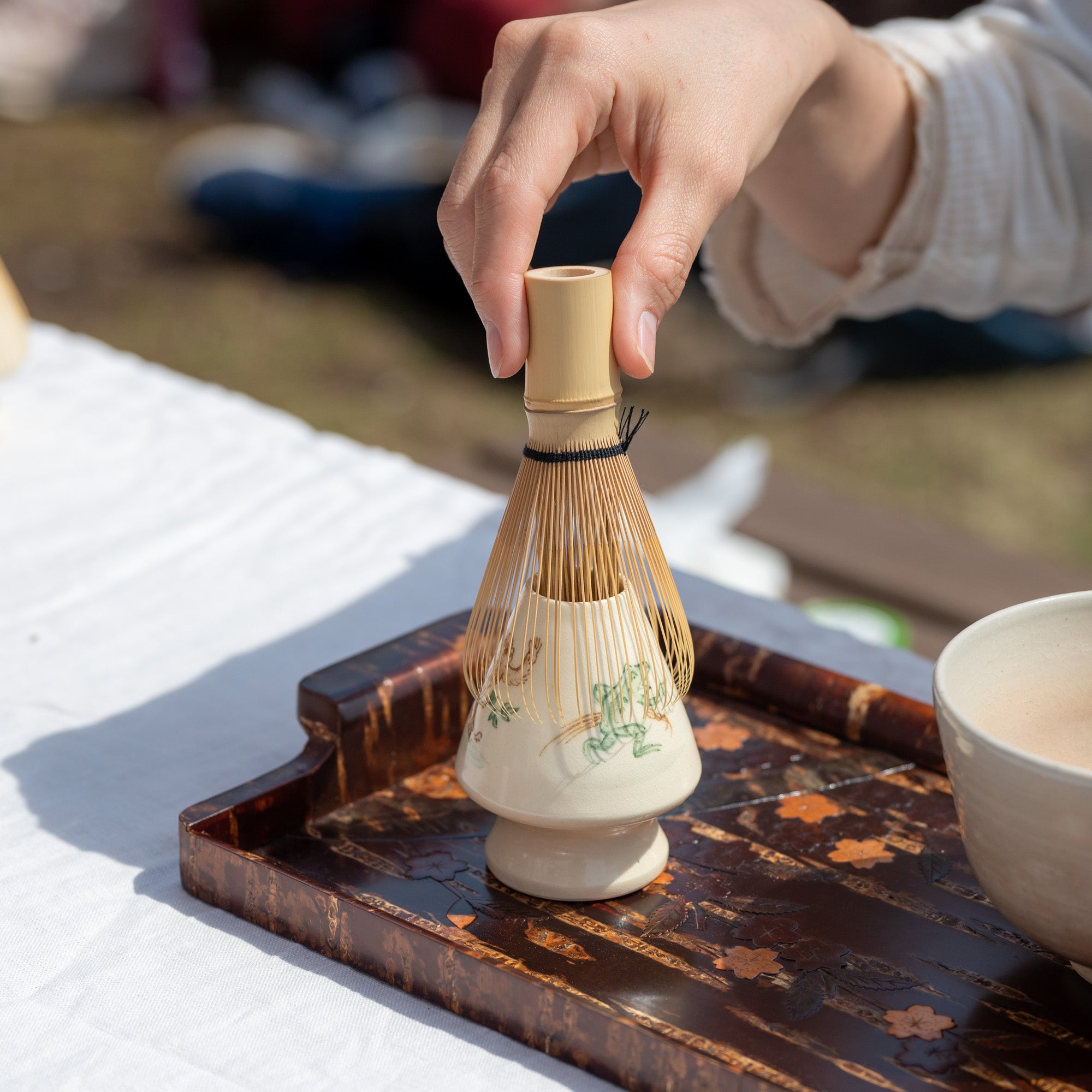
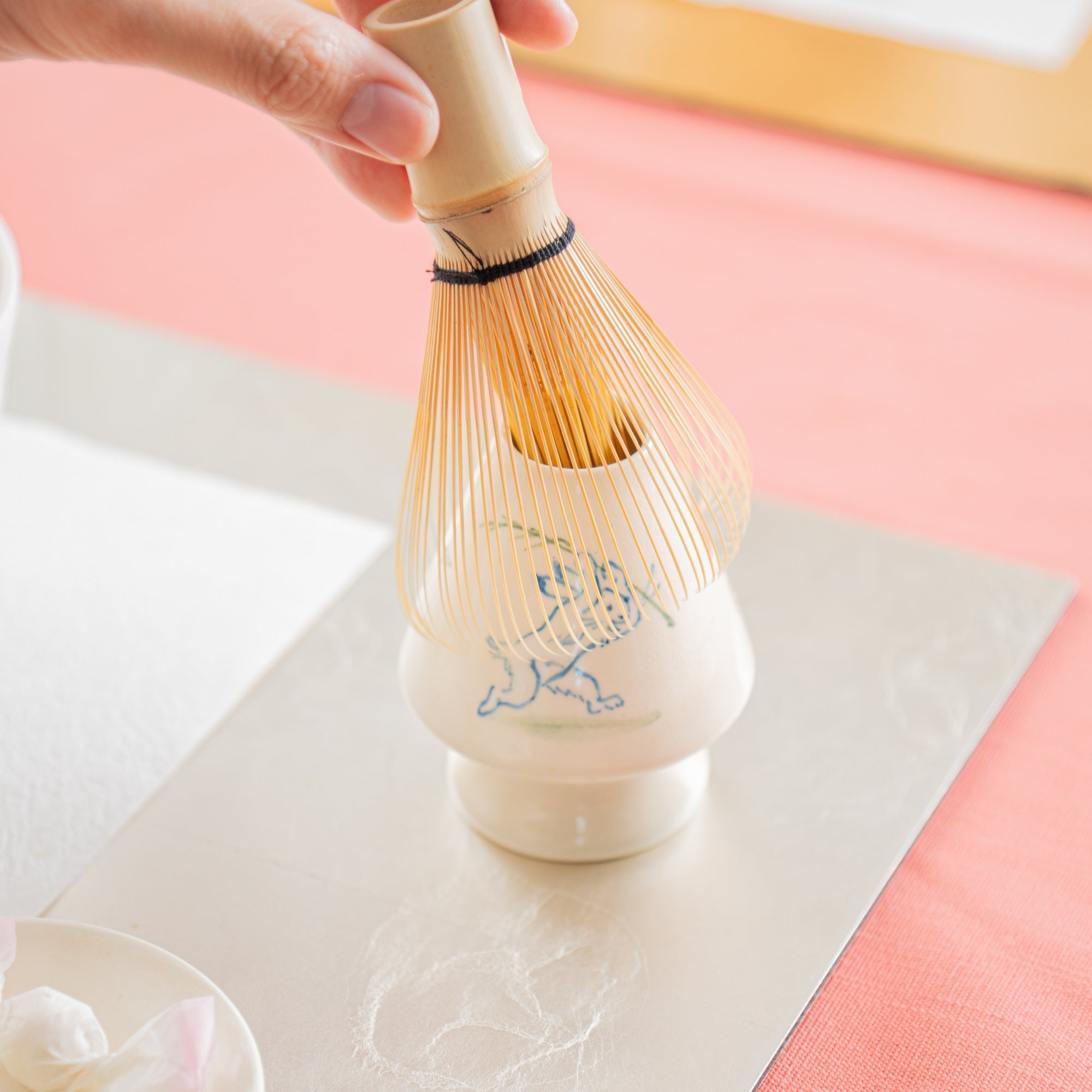
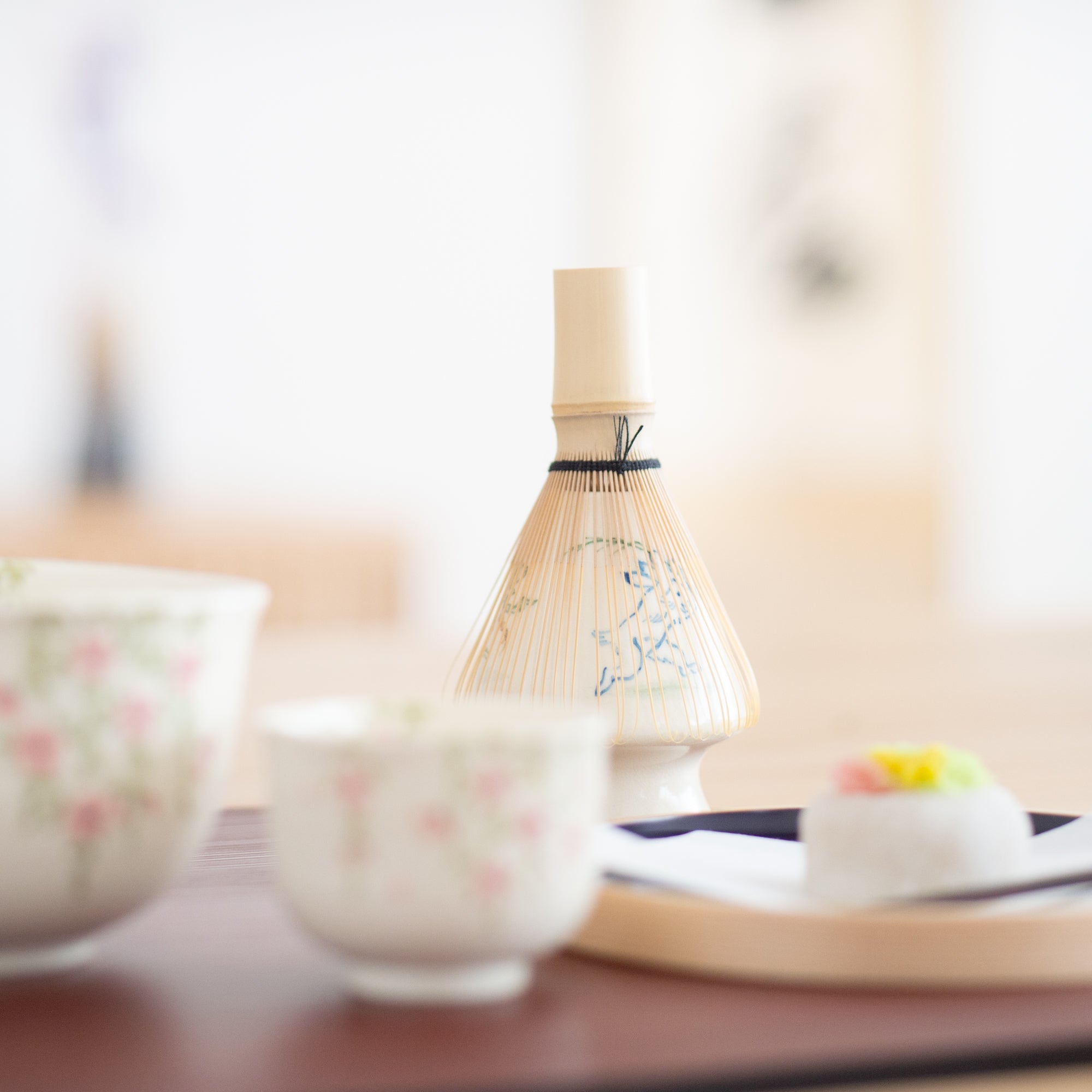
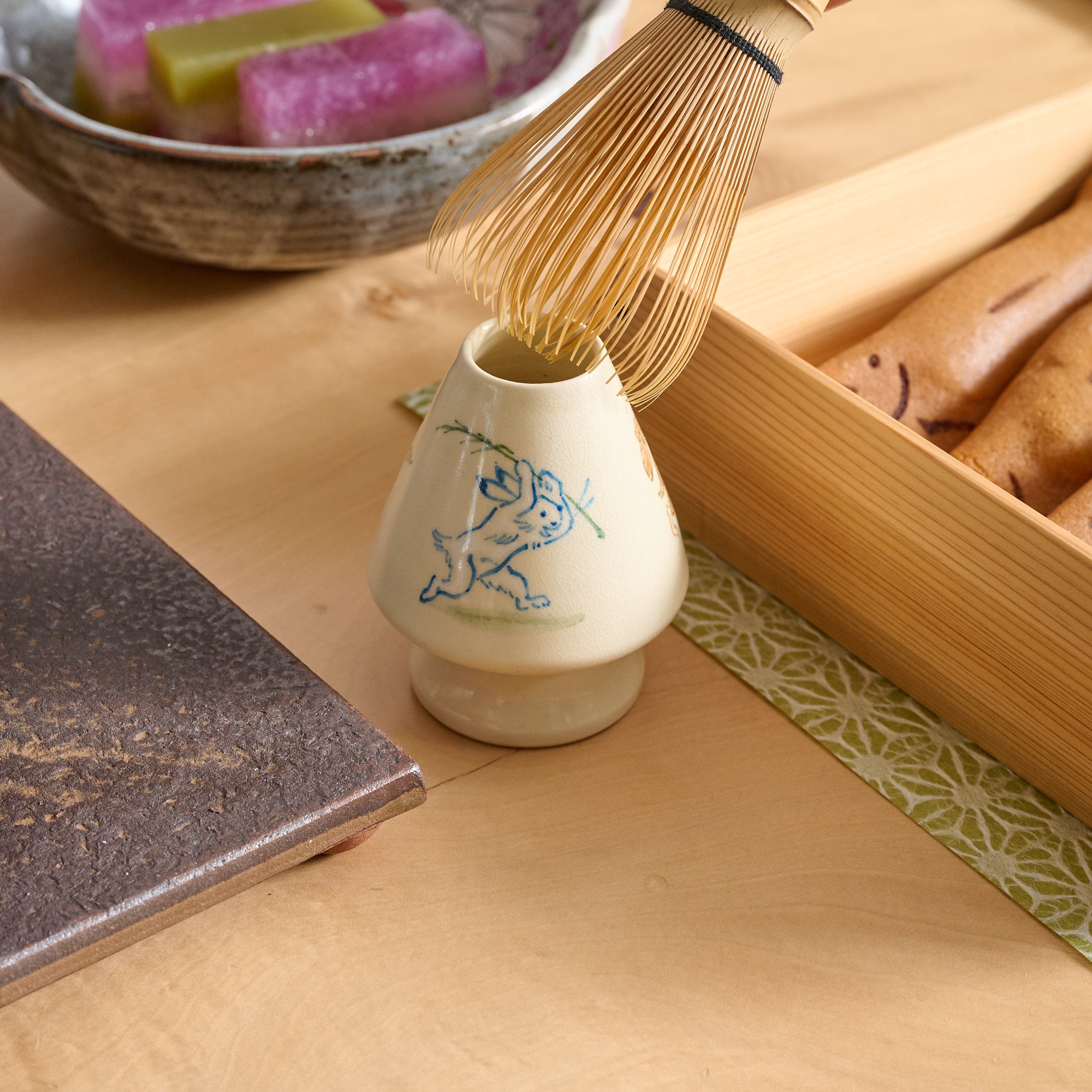
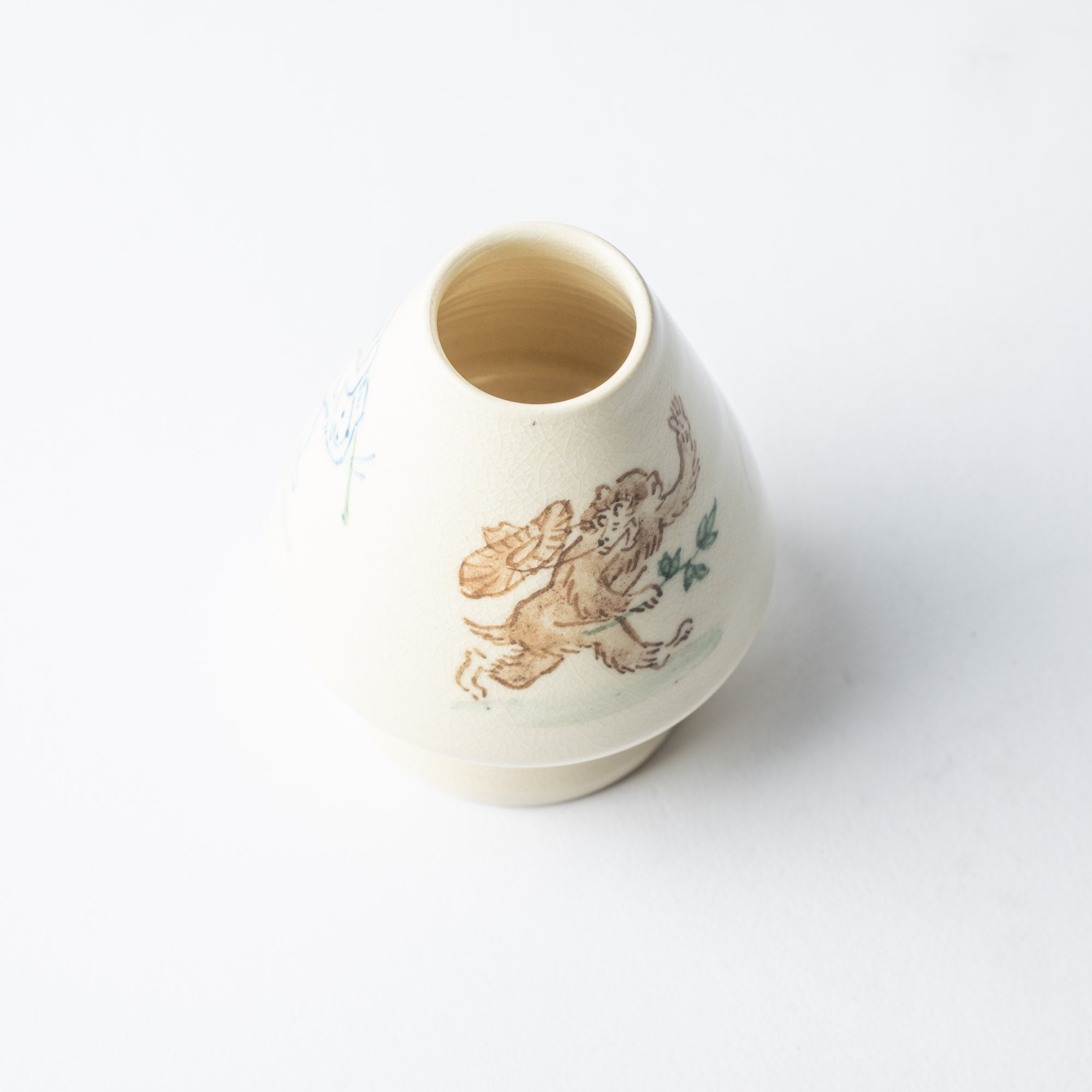
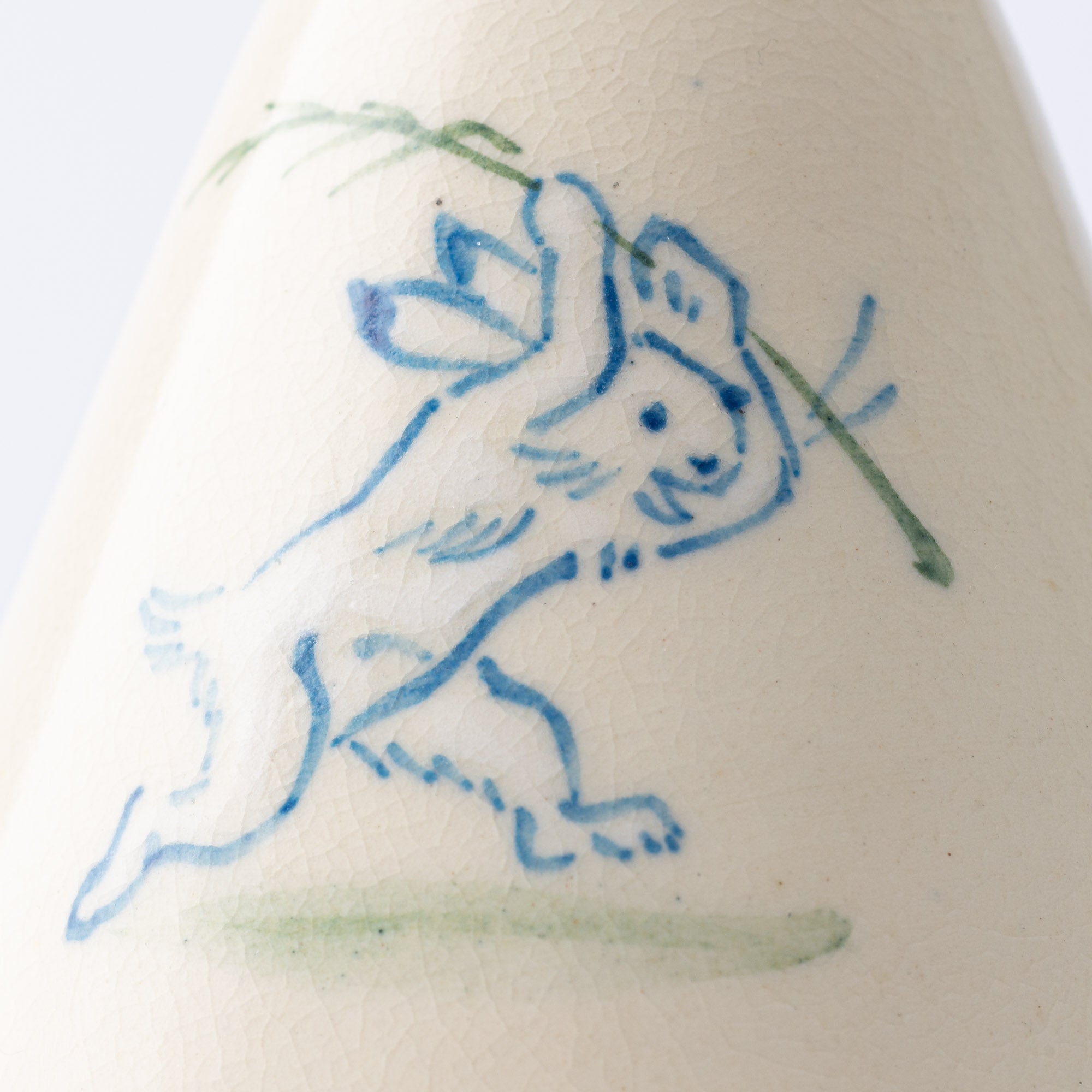
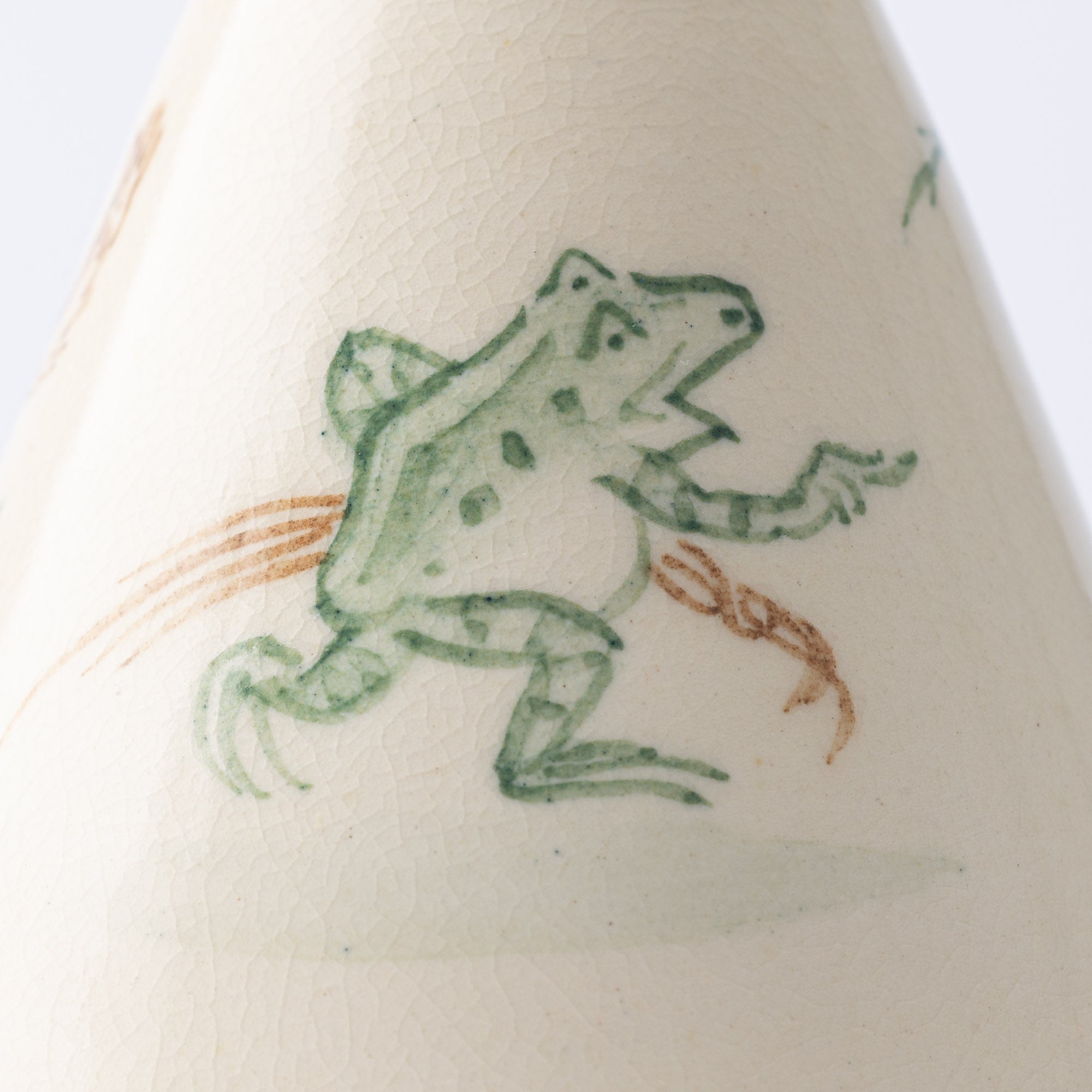
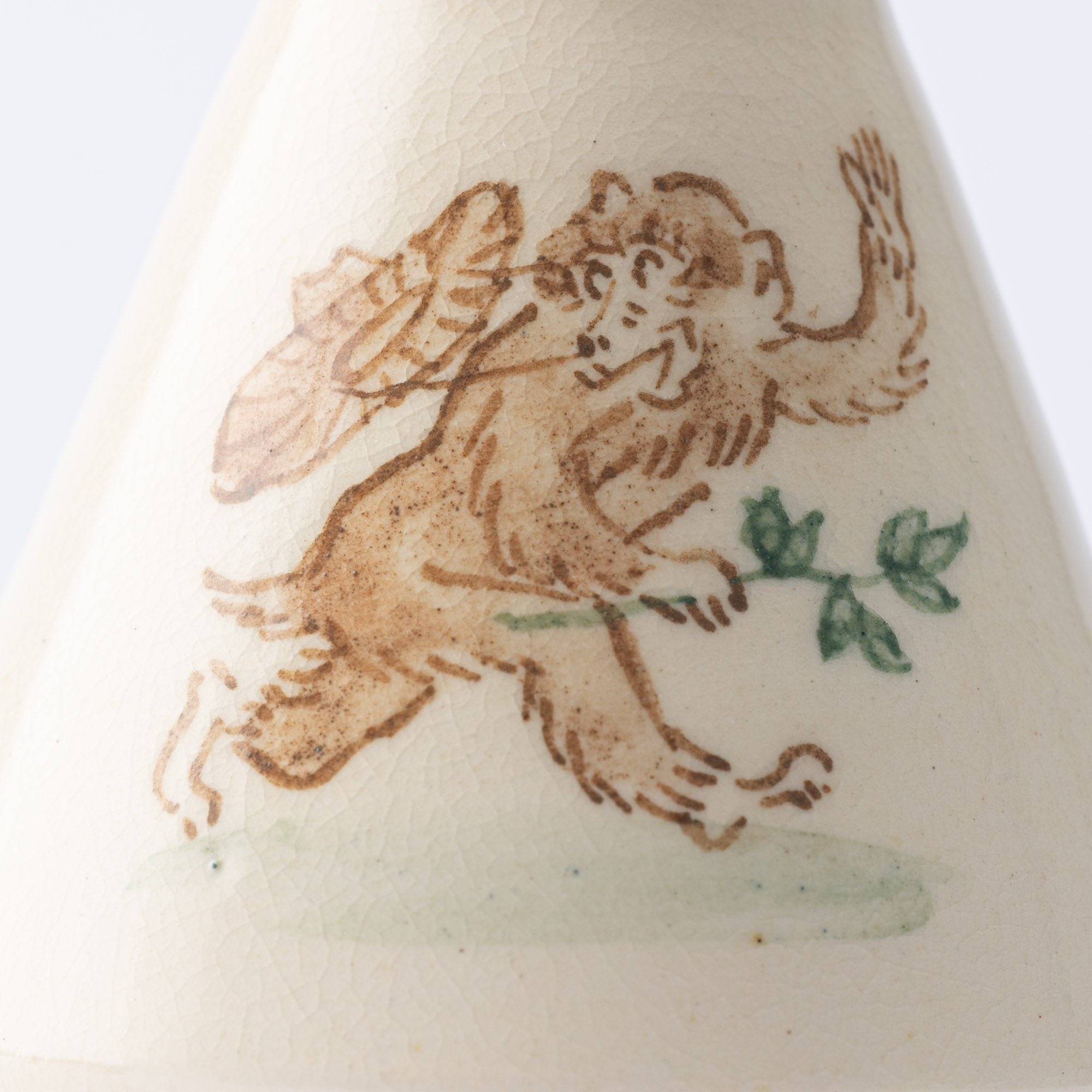
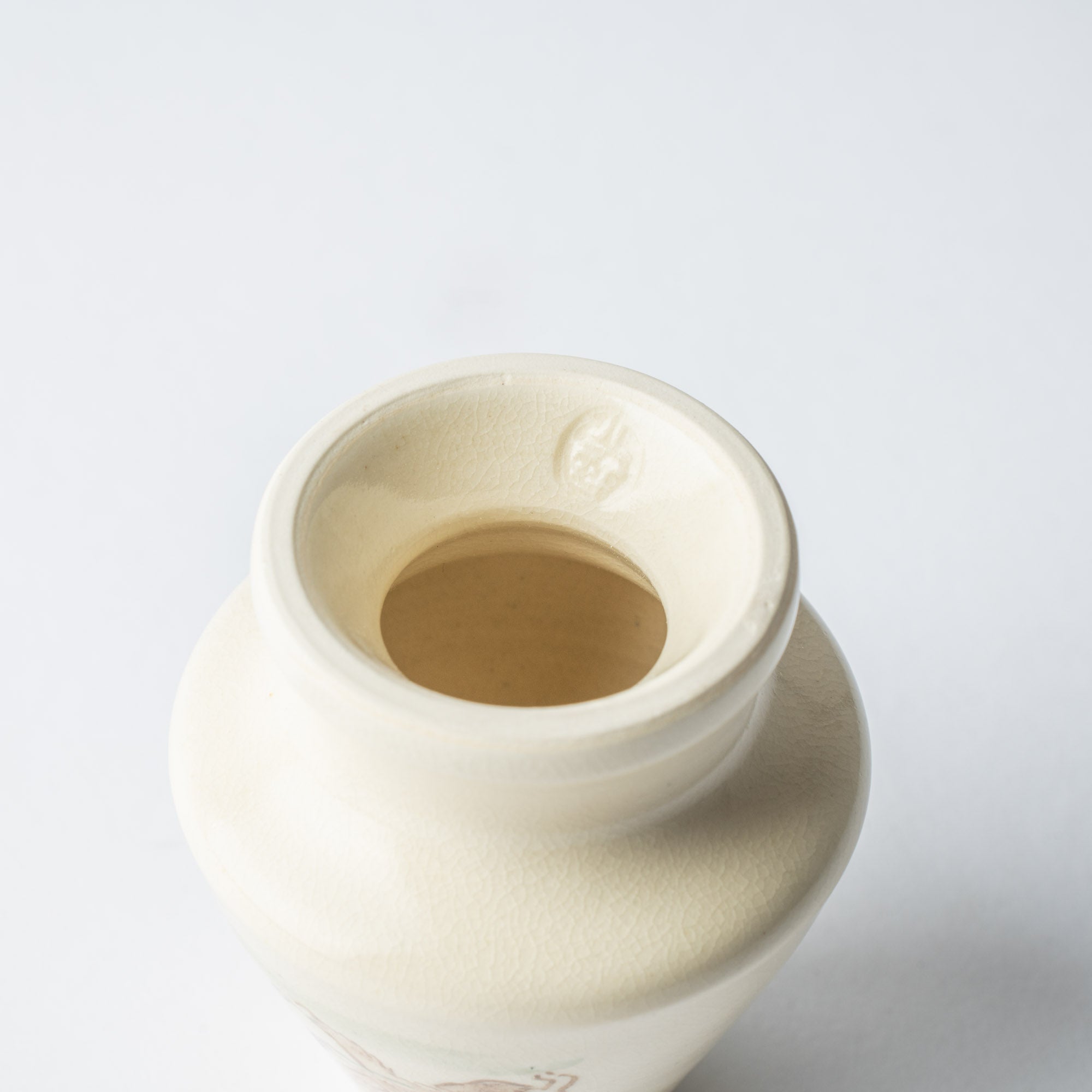
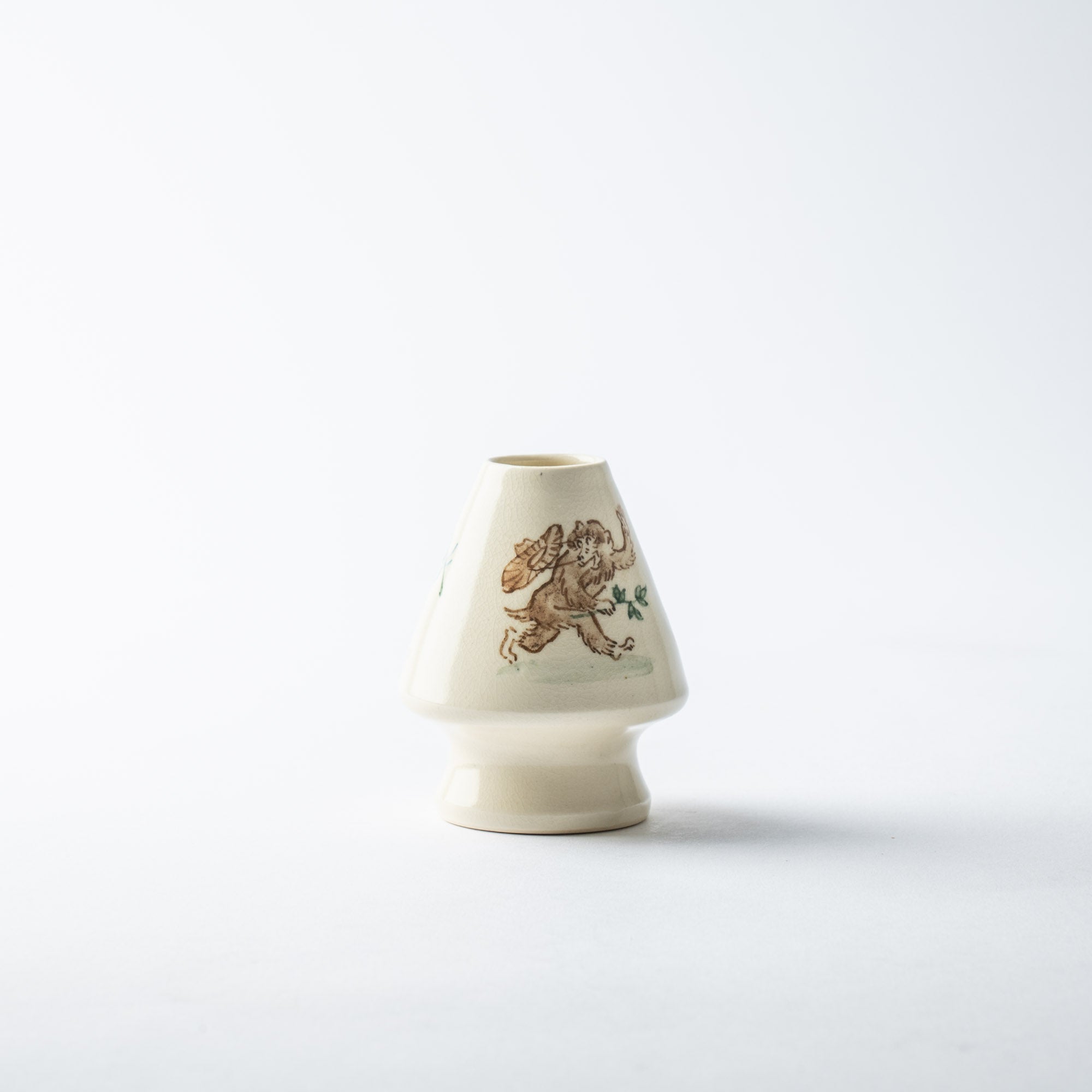
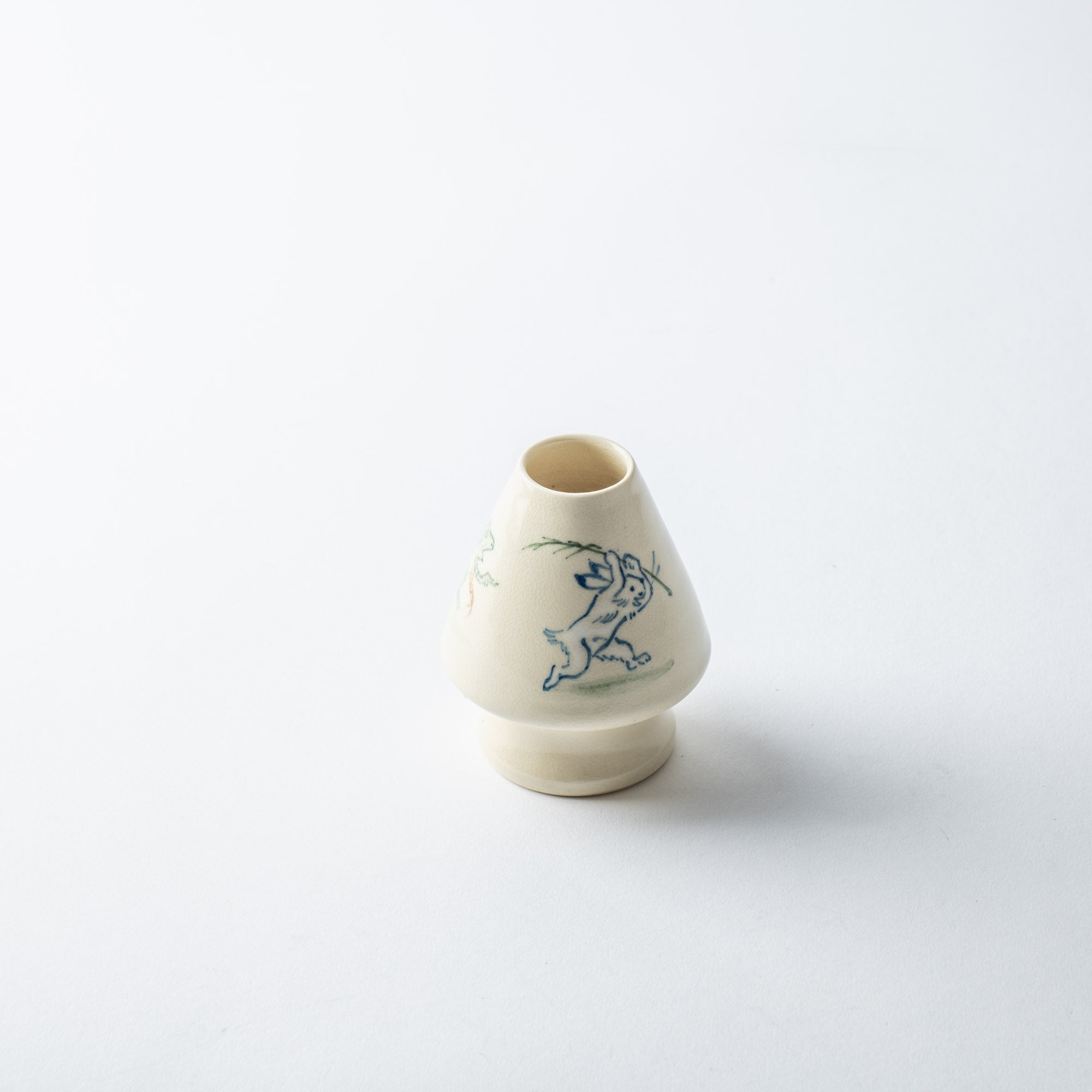
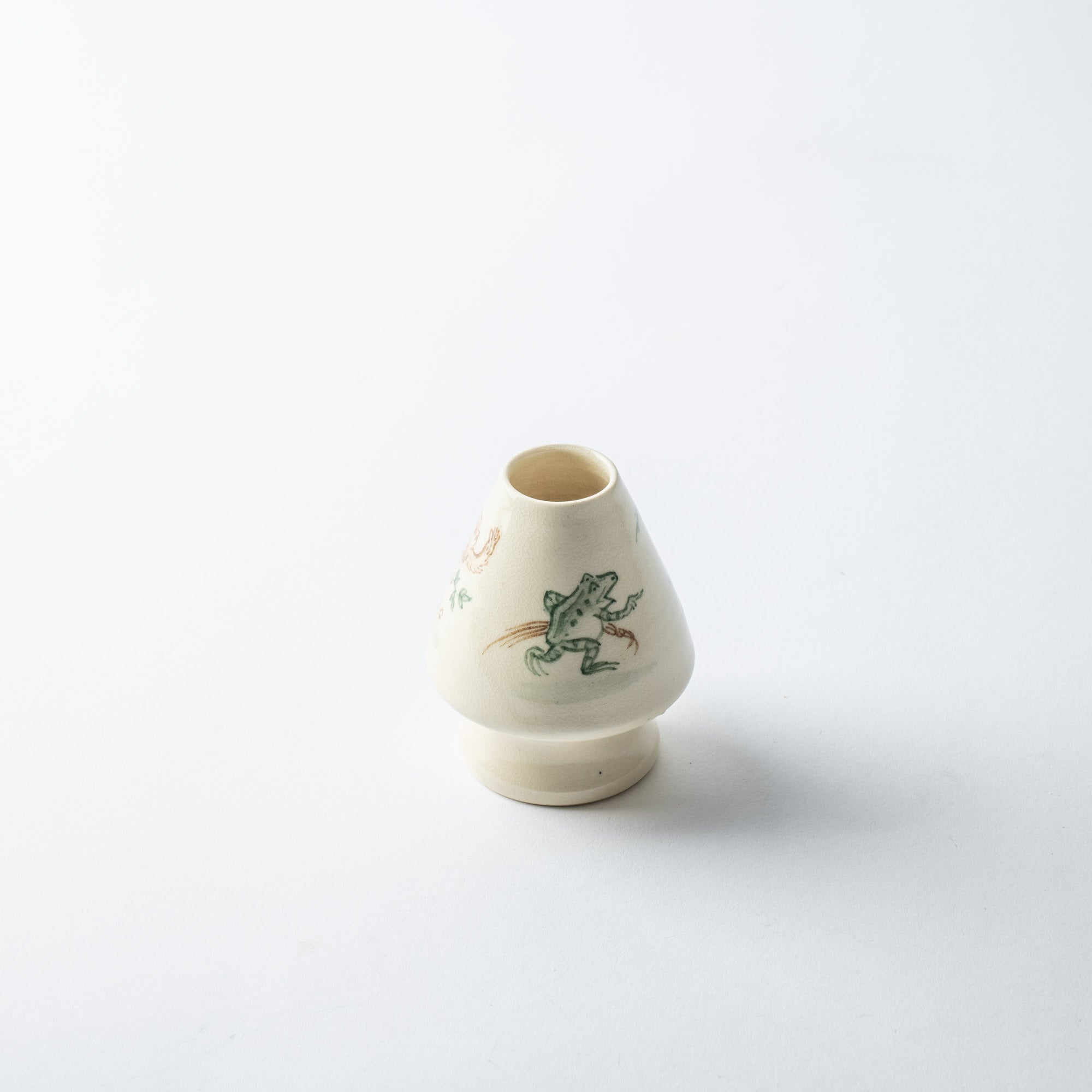
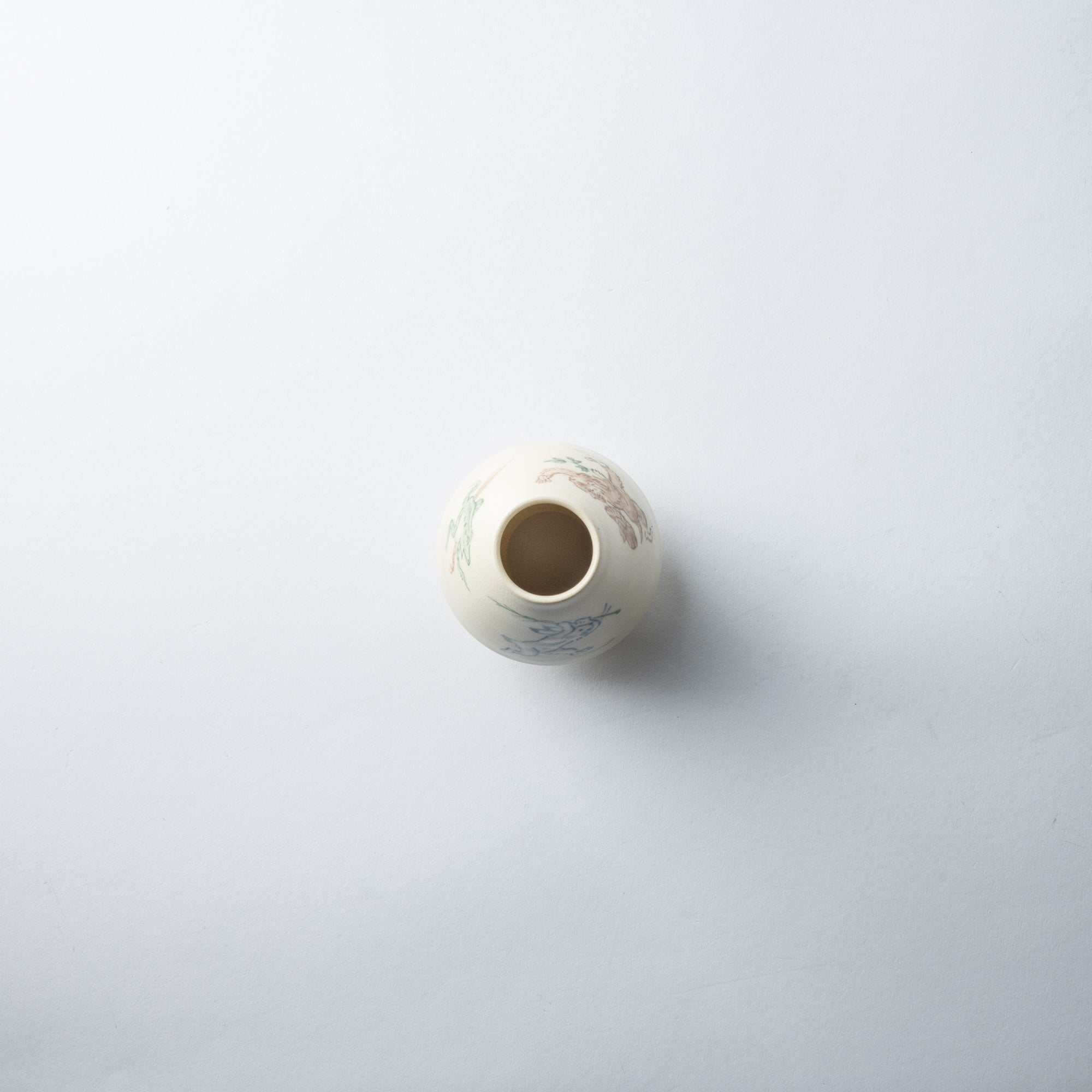
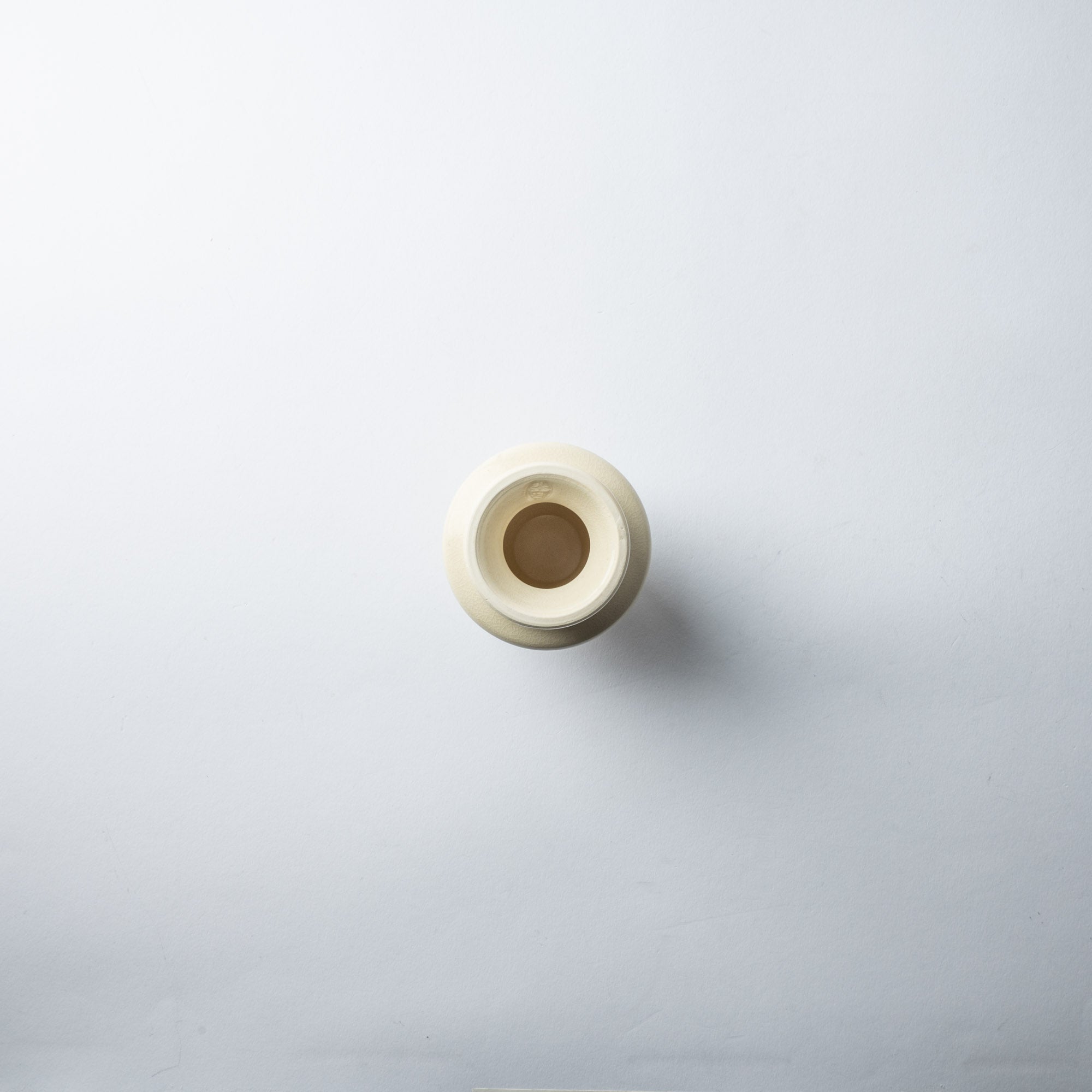
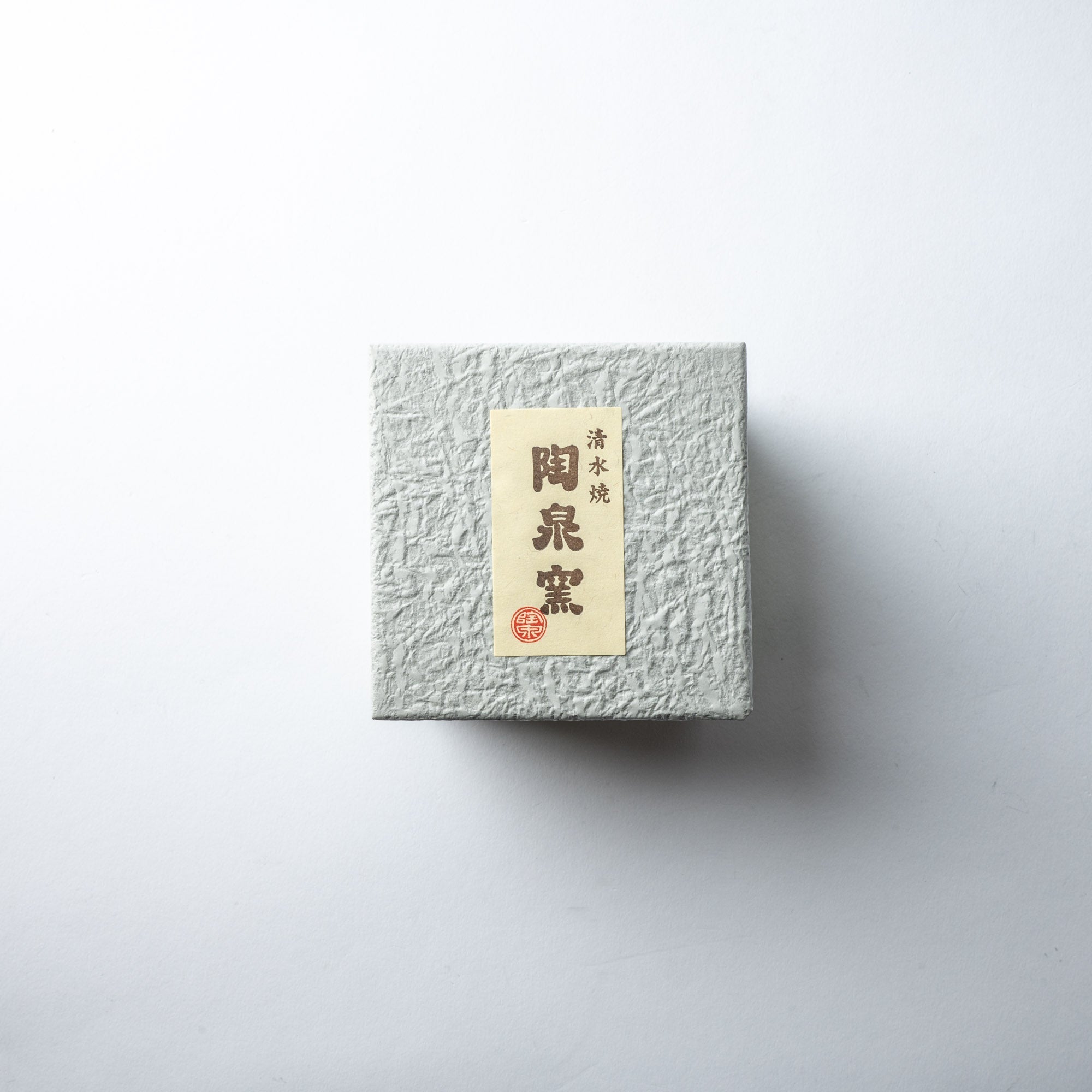
Kozan-ji Tempel Choju Giga Matcha Schneebesenhalter
Estimated Shipping Widget will be displayed here!
Mit dem unverwechselbaren Nami-Yu Glasur, die aus der Asche des Kyoto-Waldes hergestellt wird, hat dieser Matcha-Besenhalter eine natürliche Grundfarbe in gelblichem Cremeweiß. Es ist ein traditionelles Werkzeug zum Ausrichten der Borsten eines Chasen Matcha-Schneebesen.
Da Bambus dazu neigt, sich leicht aufzurichten, können Sie die Form Ihres Matcha-Besens mithilfe des Halters beibehalten. Spülen Sie den Besen nach Gebrauch mit Wasser ab und stellen Sie ihn in den Halter.
Die Bemalung erfolgt durch individuelle Maler im japanischen Stil, die ihre eigene Originalität und Tiefe über die Erwartungen an eine bloße Dekoration hinaus verfolgen. Dieser Matcha-Besenhalter zeigt die berühmte illustrierte Schriftrolle, bekannt als Choju Giga, eine karikaturhafte Bildrolle, die anthropomorphe Tiere und ihre spielerischen Mätzchen darstellt, aus der Mitte des 12. bis Mitte des 13. Jahrhunderts. Diese Motive aus den Bildrollen gelten als japanischer Nationalschatz im Kozan-ji-Tempel in Kyoto. Genießen Sie diese humorvollen und verspielten Werke, die mit der Maltechnik von Tousen Kiln detailreich dargestellt wurden.
Wir sehen das Bild eines Frosches, eines Kaninchens und eines Affen. Dreht man den Gegenstand um, erblickt man jedes verspielte Tier. Von oben sieht man alle drei im Kreis laufen. Obwohl es sich um ein einfaches Werkzeug handelt, verleihen diese kleinen herumlaufenden Tiere der ruhigen Teezeremonie eine komische Note.
EINZELHEITEN
| Quantity | 1 |
| Size |
D 6.5 cm (2.5 in) x H 8 cm (3.1 in) [Top opening] D 2.6 cm (1 in)1 |
| Material | Stoneware |
| Package Type | Paper box |
| Microwave | No |
| Dishwasher | No |
Hersteller / Marke
Tosen Kiln wurde 1868 als Großhändler für Kiyomizu-Ware gegründet. 1944 eröffnete das Unternehmen ein Produktionsstudio in Mukomachi, einem Vorort von Kyoto, und begann damit die Produktion von Kiyomizu-Ware in großem Maßstab. Heute ist der Ofen in Gojo, Kyoto, in Betrieb und führt sein handwerkliches Erbe fort.
Tosen Kiln hat sich der Verfeinerung seiner Techniken und seines künstlerischen Feingefühls verschrieben und greift die traditionelle Handwerkskunst Kyotos auf, während es sie an die Moderne anpasst. Inspiriert vom Töpfermeister Nonomura Ninsei aus der Edo-Zeit, bewahrt das Unternehmen dessen präzise Drehtechniken und leuchtenden Malstil und verbindet diese mit klaren Linien und warmen Tönen, um Stücke zu schaffen, die mit der zeitgenössischen Ästhetik harmonieren.
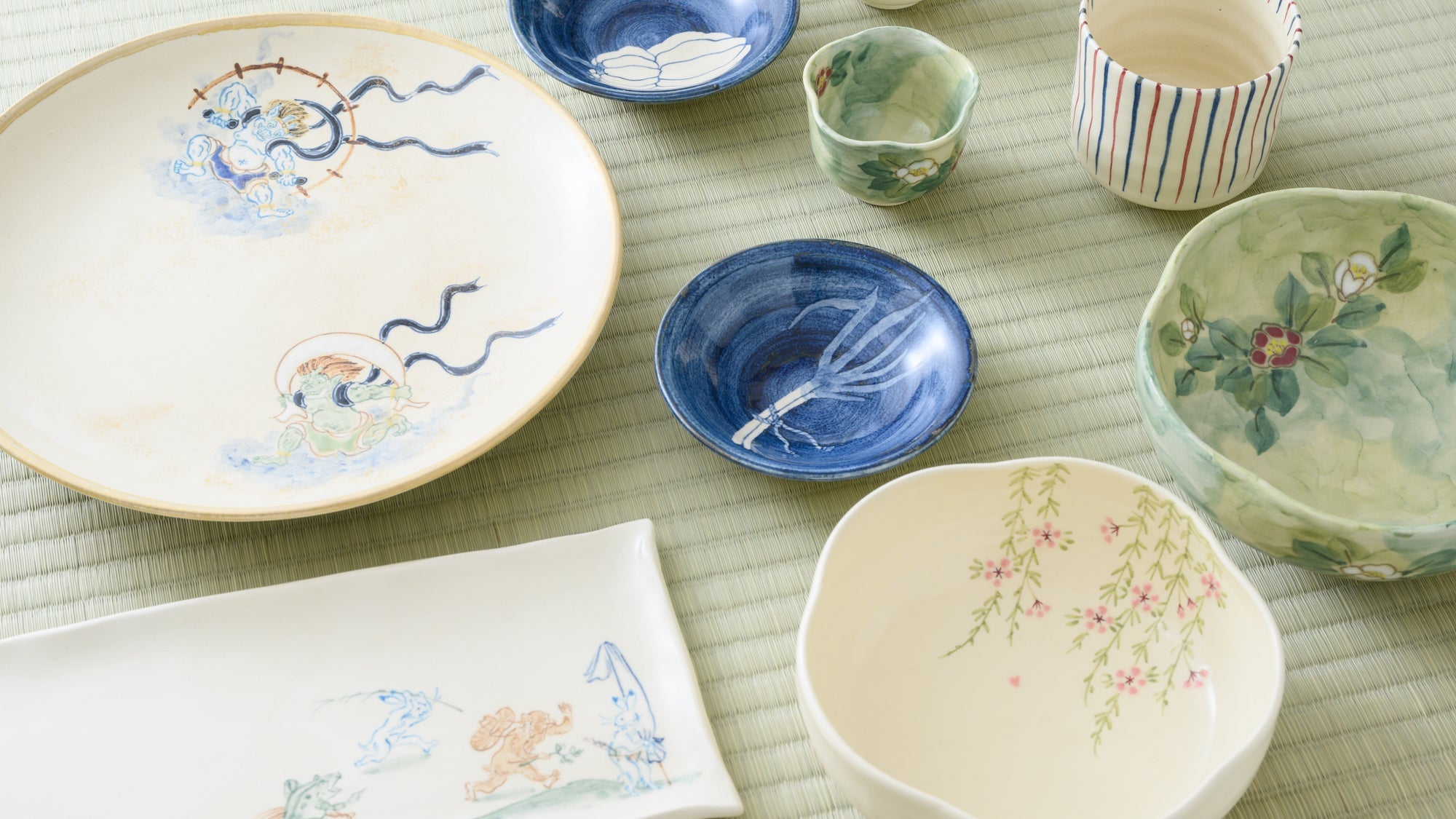
Kunsthandwerk
Kyo- und Kiyomizu-Ware, zusammen als Kyo-yaki und Kiyomizu-yaki bekannt, sind berühmte Keramikstile aus Kyoto. Bekannt für ihr lebendiges Design, ihre fein geformten Formen und die Liebe zum handwerklichen Detail, spiegeln diese Waren Kyotos unverwechselbaren Sinn für Schönheit und künstlerische Raffinesse wider.
Kyo- und Kiyomizu-Ware zeichnen sich durch eine lange gepflegte Vielfalt aus und greifen auf Techniken und Stile der Töpfertraditionen Japans zurück. So entwickelte sich eine ausdrucksstarke und typisch Kyoto-Kunstform. 1977 als traditionelles japanisches Kunsthandwerk anerkannt, werden sie bis heute wegen ihrer kulturellen Tiefe und Alltagstauglichkeit geschätzt.

Optionen auswählen

















Estimated Shipping Widget will be displayed here!
Matcha-Schneebesen & Schneebesenhalter
Erhöhen Sie Ihr Matcha-Tee-Erlebnis mit unseren Premium-Bambus-Matcha-Besen, bekannt als Chasen, und Schneebesenhalter, oder Chasen-Tate. Diese unverzichtbaren Werkzeuge sind sowohl funktional als auch ästhetisch und helfen Ihnen, perfekt schaumigen Matcha zuzubereiten und gleichzeitig die Tradition der Teezeremonie zu bewahren. Ob Teekenner oder Anfänger, diese handgefertigten Stücke verleihen Ihren Teeritualen Authentizität und Eleganz.
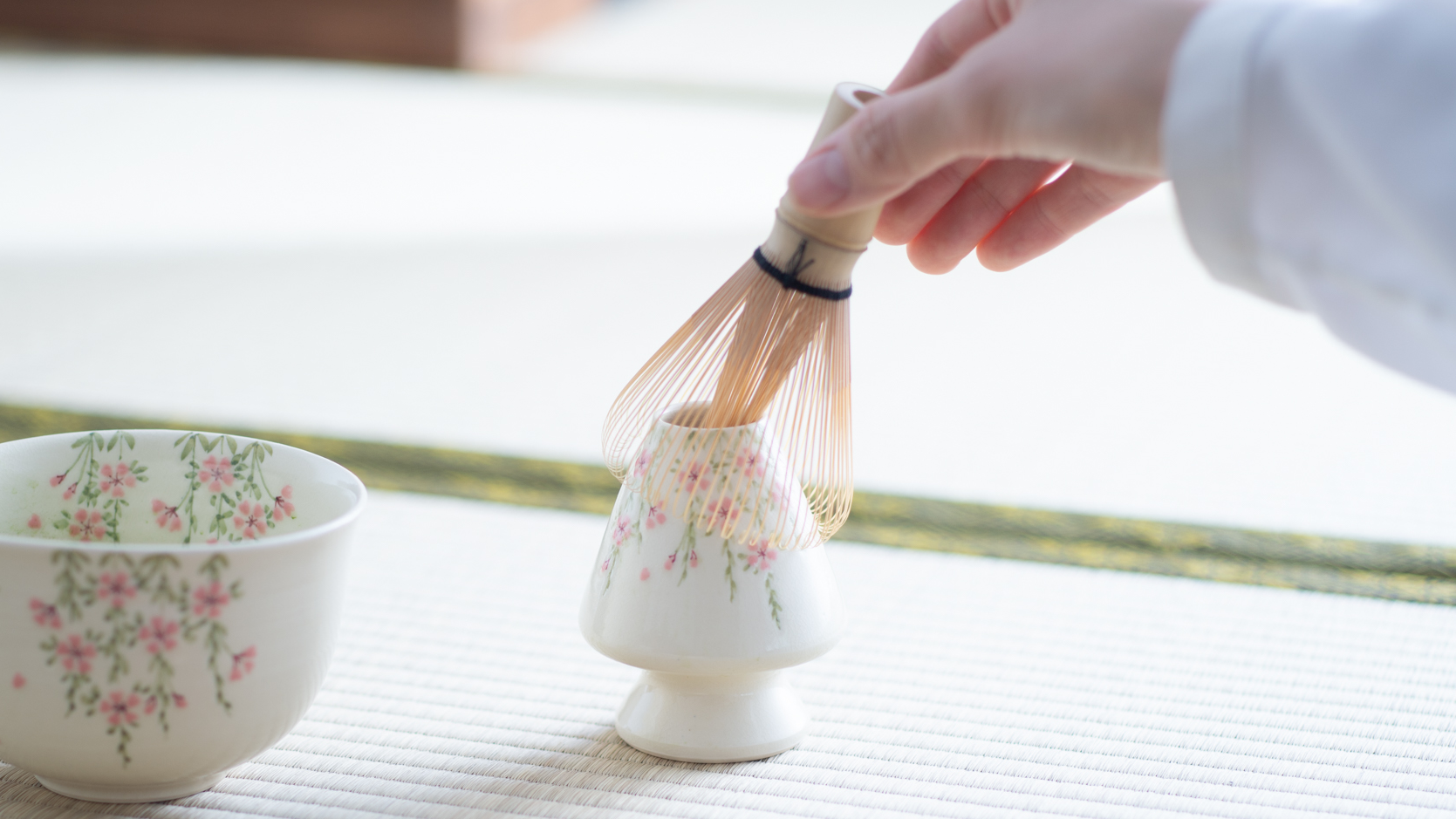
Steingut
Aus unserer Kollektion an Geschirr und Essgeschirr haben wir Steinzeugprodukte zusammengestellt, die die Wärme des Materials voll zur Geltung bringen. Wir hoffen, dass Sie diese Stücke, die bei Menschen jeden Alters und aus allen Regionen beliebt sind, in Ihrem Zuhause willkommen heißen.
